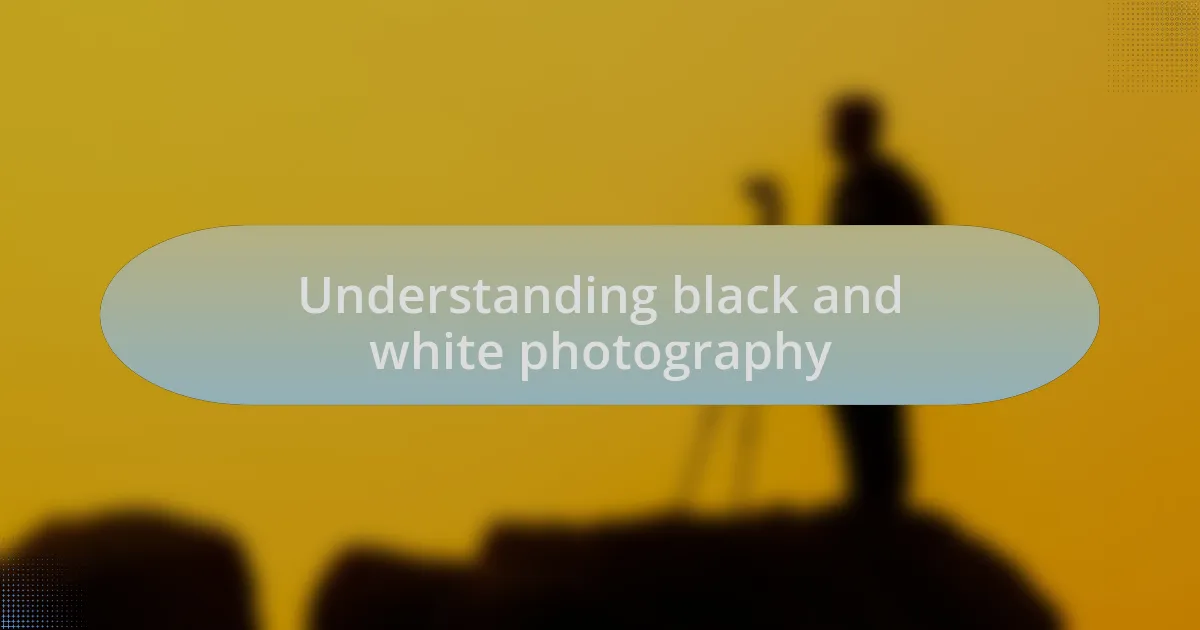Key takeaways:
- Black and white photography reveals the raw essence of subjects by removing color distractions.
- Contrast, light, and shadow are crucial in evoking emotions and storytelling in black and white images.
- Mastering this form requires an understanding of texture, composition, and the impact of monochrome tones.

Understanding black and white photography
Black and white photography offers a unique way to experience the world, stripping away the distractions of color to reveal the raw essence of a subject. I remember the first time I captured an image in black and white; it was a portrait of my grandmother. The simplicity of the lack of color highlighted her expressive wrinkles and the depth of her eyes, transforming a moment into a timeless memory.
When I think about what makes black and white photography powerful, it often boils down to contrasts. The interplay of light and shadow can evoke a wide range of emotions, stirring a sense of nostalgia or even drama. Have you ever experienced how a dramatic black and white photo can transport you to a different time? That emotional resonance is something I strive for in my own work, encapsulating stories within the starkness of monochrome tones.
Moreover, mastering black and white photography involves understanding how various elements contribute to an image’s impact. The texture, composition, and contrast all play vital roles. I often challenge myself to explore everyday scenes—like the way sunlight filters through trees—seeing how they transform when colors fade away. This approach not only enhances my creativity but also deepens my appreciation for the subtleties around me.